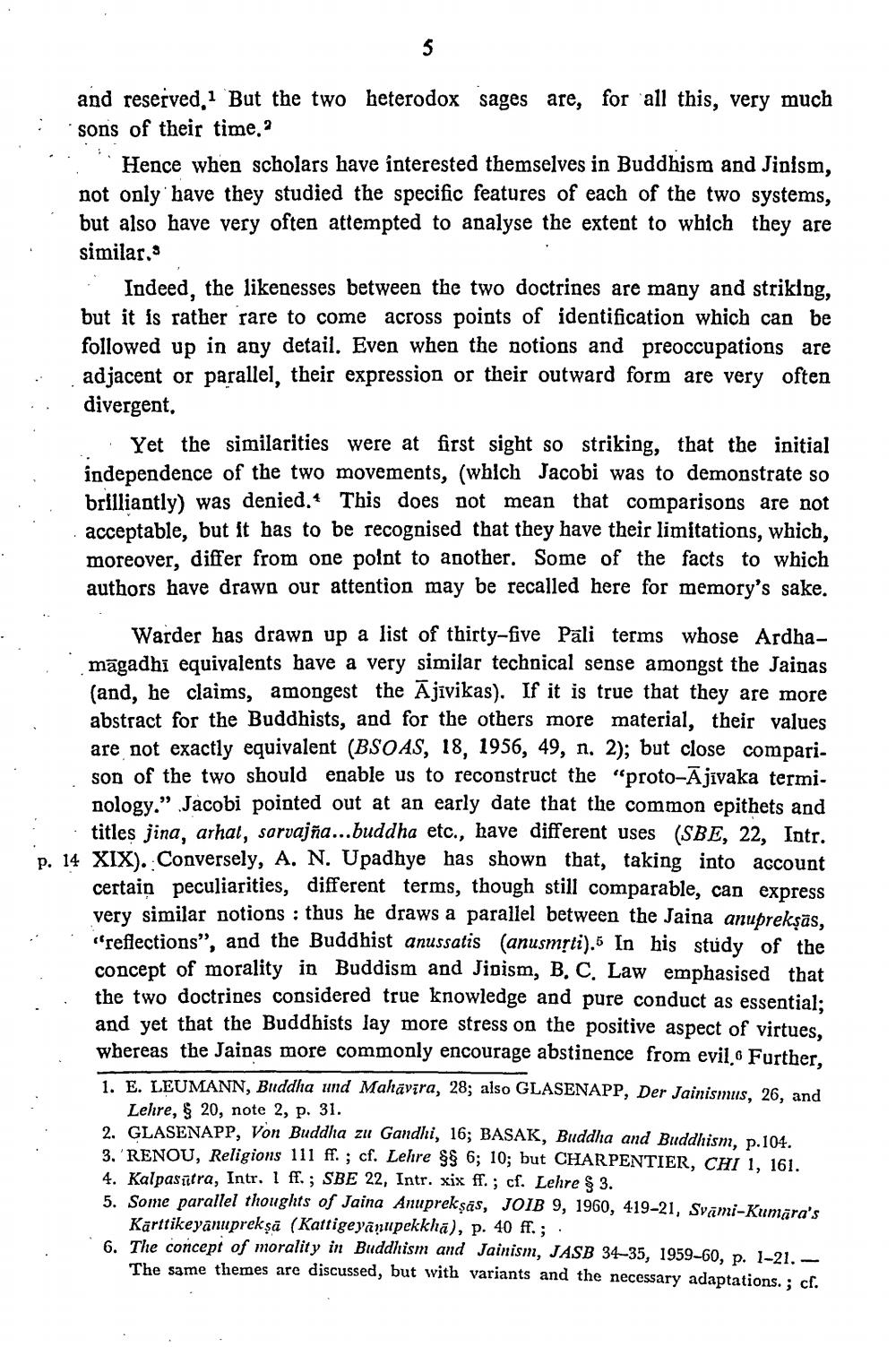________________
5
and reserved. But the two heterodox sages are, for all this, very much Isons of their time,"
Hence when scholars have interested themselves in Buddhism and Jinism, not only have they studied the specific features of each of the two systems, but also have very often attempted to analyse the extent to which they are similar.
Indeed, the likenesses between the two doctrines are many and striking, but it is rather rare to come across points of identification which can be followed up in any detail. Even when the notions and preoccupations are adjacent or parallel, their expression or their outward form are very often divergent.
Yet the similarities were at first sight so striking, that the initial independence of the two movements, (which Jacobi was to demonstrate so brilliantly) was denied. This does not mean that comparisons are not acceptable, but it has to be recognised that they have their limitations, which, moreover, differ from one point to another. Some of the facts to which authors have drawn our attention may be recalled here for memory's sake.
Warder has drawn up a list of thirty-five Pali terms whose Ardhamāgadhi equivalents have a very similar technical sense amongst the Jainas (and, he claims, amongest the Ajīvikas). If it is true that they are more abstract for the Buddhists, and for the others more material, their values are not exactly equivalent (BSOAS, 18, 1956, 49, n. 2); but close comparison of the two should enable us to reconstruct the "proto-Ajivaka terminology." Jacobi pointed out at an early date that the common epithets and titles jina, arhat, sarvajña...buddha etc., have different uses (SBE, 22, Intr. p. 14 XIX). Conversely, A. N. Upadhye has shown that, taking into account certain peculiarities, different terms, though still comparable, can express very similar notions: thus he draws a parallel between the Jaina anuprekṣās, "reflections", and the Buddhist anussatis (anusmrti).5 In his study of the concept of morality in Buddism and Jinism, B. C. Law emphasised that the two doctrines considered true knowledge and pure conduct as essential; and yet that the Buddhists lay more stress on the positive aspect of virtues, whereas the Jainas more commonly encourage abstinence from evil. Further,
1. E. LEUMANN, Buddha und Mahāvīra, 28; also GLASENAPP, Der Jainismus, 26, and Lehre, 20, note 2, p. 31.
2. GLASENAPP, Von Buddha zu Gandhi, 16; BASAK, Buddha and Buddhism, p.104. 3. RENOU, Religions 111 ff.; cf. Lehre §§ 6; 10; but CHARPENTIER, CHI 1, 161. 4. Kalpasutra, Intr. 1 ff.; SBE 22, Intr. xix ff.; cf. Lehre § 3.
5. Some parallel thoughts of Jaina Anuprekṣas, JOIB 9, 1960, 419-21, Svami-Kumāra's Karttikeyanuprekṣā (Kattigeyāņupekkhā), p. 40 ff.;
6. The concept of morality in Buddhism and Jainism, JASB 34-35, 1959-60, p. 1-21.The same themes are discussed, but with variants and the necessary adaptations.; cf.




